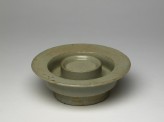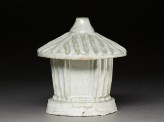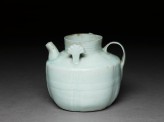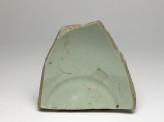Room 38 | China from AD 800 gallery
Explore key developments in the history and culture of China, from the arts and crafts of the Song Dynasty up to the present day.
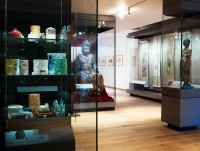
White ceramics, first made in northern China, were widely imitated. The northern wares are creamy-white with the warm tones that come from an oxygen-rich kiln atmosphere. The cooler tones from the reduction-firing wood-burning southern kilns gave a bluish-white glaze known as ‘qingbai’. Ding wares from northern China were highly valued during the Song, and later became one of the most coveted antiques of the Ming and Qing dynasties. The southern kilns at Jingdezhen became the centre of porcelain production, supplying China and the rest of the world.
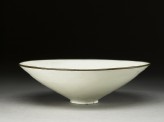 White ware bowl with floral decoration (EA1956.1368)
White ware bowl with floral decoration (EA1956.1368)
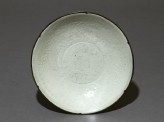 White ware dish with floral decoration (EA1956.1439)
White ware dish with floral decoration (EA1956.1439)
 White ware vase with 'S'-shaped handles (EA1956.1401)
White ware vase with 'S'-shaped handles (EA1956.1401)
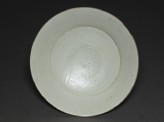 White ware dish with lotus decoration (EAX.1181)
White ware dish with lotus decoration (EAX.1181)
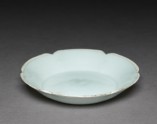 White ware dish with lobed lip (EA1956.814)
White ware dish with lobed lip (EA1956.814)
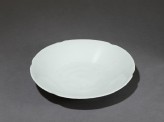 White ware dish (EA1956.1180)
White ware dish (EA1956.1180)
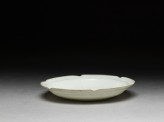 White ware dish with flattened and lobed rim (EA1956.1842)
White ware dish with flattened and lobed rim (EA1956.1842)
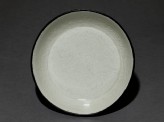 White ware bowl with dragons, flowers, and clouds (EAX.1268)
White ware bowl with dragons, flowers, and clouds (EAX.1268)
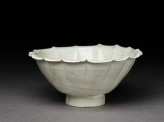 White ware bowl with lobed rim (EA1956.1114)
White ware bowl with lobed rim (EA1956.1114)
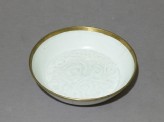 White ware dish with floral decoration (EAX.1163)
White ware dish with floral decoration (EAX.1163)
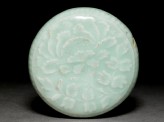 White ware box with peony decoration, and modelled lotus plants inside (EA1956.1404)
White ware box with peony decoration, and modelled lotus plants inside (EA1956.1404)
 White ware ewer in double-gourd form (EA1980.274)
White ware ewer in double-gourd form (EA1980.274)
 Lidded white ware jar surmounted by bird (EA1956.1384)
Lidded white ware jar surmounted by bird (EA1956.1384)
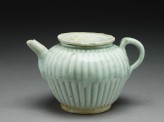 White ware ewer with ribbed body (EA1980.304)
White ware ewer with ribbed body (EA1980.304)
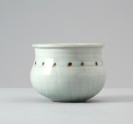 White ware measuring jar for rice (LI1301.55)
White ware measuring jar for rice (LI1301.55)
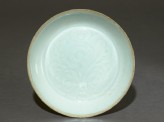 White ware dish with floral decoration (EA1956.827)
White ware dish with floral decoration (EA1956.827)
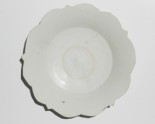 White ware dish with foliated rim (EA1978.1233)
White ware dish with foliated rim (EA1978.1233)
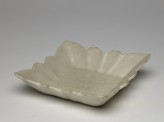 White ware dish with lotus flowers (EA1956.1154)
White ware dish with lotus flowers (EA1956.1154)
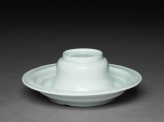 White ware cup stand (EA1956.1379.a)
White ware cup stand (EA1956.1379.a)
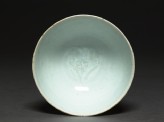 White ware bowl with flower (EA1956.826)
White ware bowl with flower (EA1956.826)
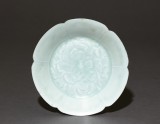 White ware dish with floral decoration (EA1956.809)
White ware dish with floral decoration (EA1956.809)
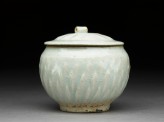 White ware jar with lotus leaf decoration (EA1956.1380)
White ware jar with lotus leaf decoration (EA1956.1380)
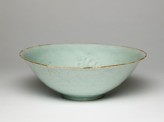 White ware bowl with flowers (EA1956.3033)
White ware bowl with flowers (EA1956.3033)
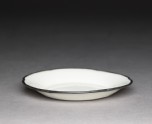 White ware dish with copper rim (EA1956.1839)
White ware dish with copper rim (EA1956.1839)
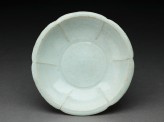 White ware dish with lobed sides (EAX.1158)
White ware dish with lobed sides (EAX.1158)
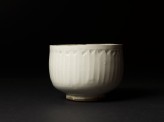 White ware bowl with straight sides (EA1956.1365)
White ware bowl with straight sides (EA1956.1365)
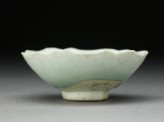 White ware cup with foliated rim (EA1980.312.a)
White ware cup with foliated rim (EA1980.312.a)
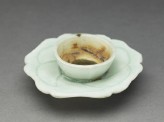 White ware cup stand with petals (EA1980.312.b)
White ware cup stand with petals (EA1980.312.b)
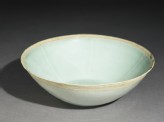 White ware bowl with fish (EA1956.3345)
White ware bowl with fish (EA1956.3345)
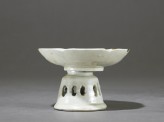 White ware dish and stand (EA1980.227)
White ware dish and stand (EA1980.227)
Wall painting from a Song tomb at Baisha
Tombs in north China often have elaborate paintings on the brick walls, depicting the occupant in auspicious surroundings. This picture shows the tomb occupant and wife seated at a table set with ceramics. In the Song dynasty, objects that had been used in daily life were placed in tombs.
Coins
The economy expanded in the Song dynasty, and many villages grew into market towns. Merchants traded goods throughout the country and formed local guilds in faraway cities. Strings of cash were a unit of currency. The coins displayed here were issued during various reigns of the Northern Song dynasty (AD 960-1127).
Chinese ship carving at Angkor Thom, Cambodia, around 1185
Song dynasty innovations in ship design and the invention of the compass meant that ships could travel further, more safely. Maritime trade increased, and cargoes of ceramics were taken across Asia and as far as Iran, Iraq, and Egypt.
Sherd from Fustat, Egypt
Merchants traded Song dynasty ceramics around South-east Asia, to the Middle East and as far as Africa. No single vessel made the entire journey westwards but wares passed through intermediate ports, as well as along overland routes. Local kilns in many places produced imitations of the Chinese wares.
See also
Notice
Objects may have since been removed or replaced from a gallery. Click into an individual object record to confirm whether or not an object is currently on display. Our object location data is usually updated on a monthly basis, so contact the Jameel Study Centre if you are planning to visit the museum to see a particular Eastern Art object.
© 2013 University of Oxford - Ashmolean Museum


